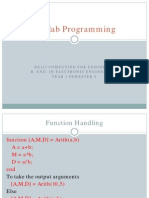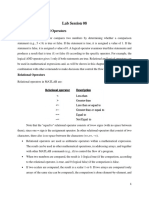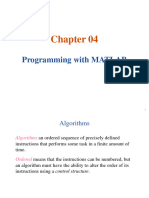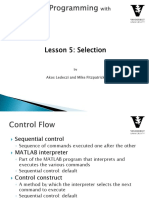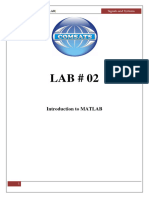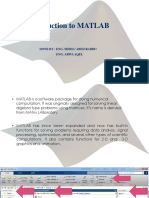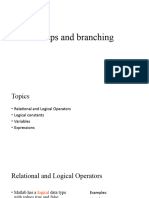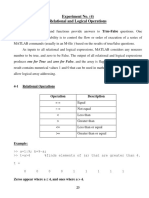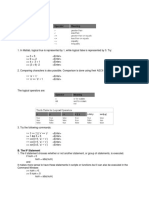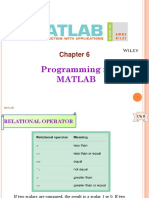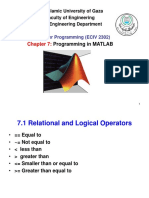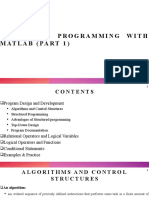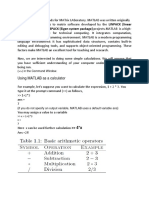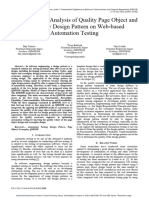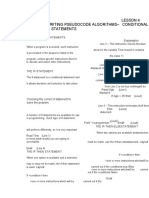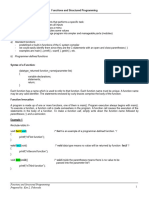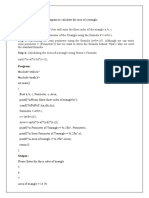0% found this document useful (0 votes)
49 views20 pagesLecture 6 Boolean Logic and Logical Operations
The document outlines the concepts of logic flow control in programming, specifically focusing on MATLAB. It covers various types of code execution such as sequential, selection, and repetitive code, along with the use of logical and relational operators. Additionally, it emphasizes good programming practices for using these operators and structures like if statements and loops.
Uploaded by
bobpinnicle10Copyright
© © All Rights Reserved
We take content rights seriously. If you suspect this is your content, claim it here.
Available Formats
Download as PPTX, PDF, TXT or read online on Scribd
0% found this document useful (0 votes)
49 views20 pagesLecture 6 Boolean Logic and Logical Operations
The document outlines the concepts of logic flow control in programming, specifically focusing on MATLAB. It covers various types of code execution such as sequential, selection, and repetitive code, along with the use of logical and relational operators. Additionally, it emphasizes good programming practices for using these operators and structures like if statements and loops.
Uploaded by
bobpinnicle10Copyright
© © All Rights Reserved
We take content rights seriously. If you suspect this is your content, claim it here.
Available Formats
Download as PPTX, PDF, TXT or read online on Scribd
/ 20












